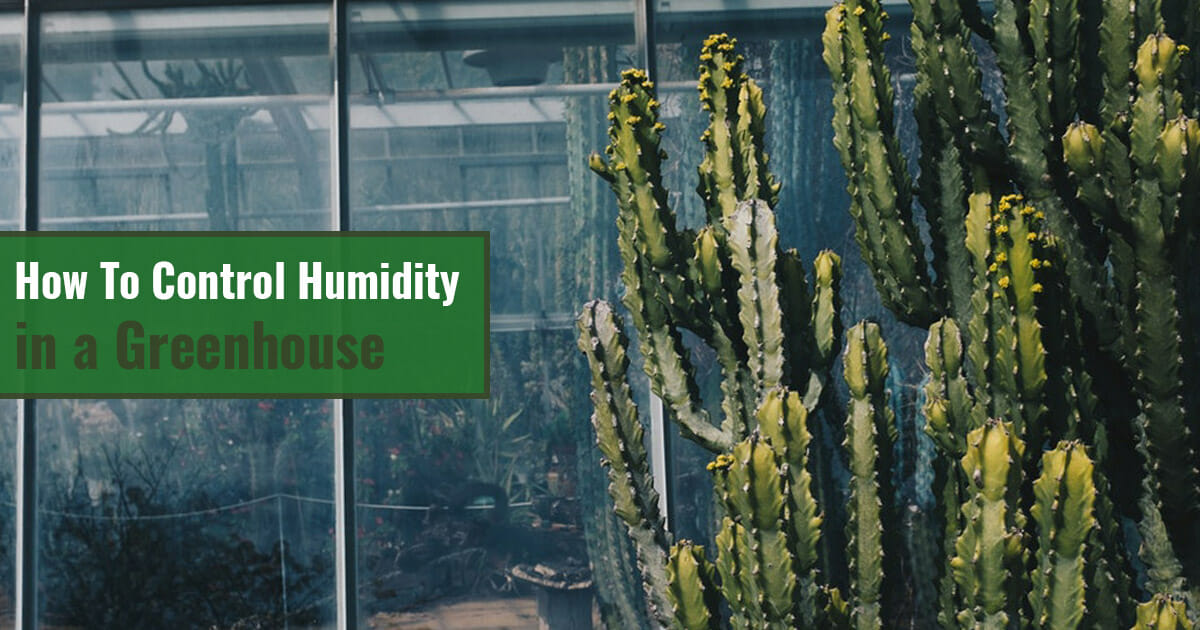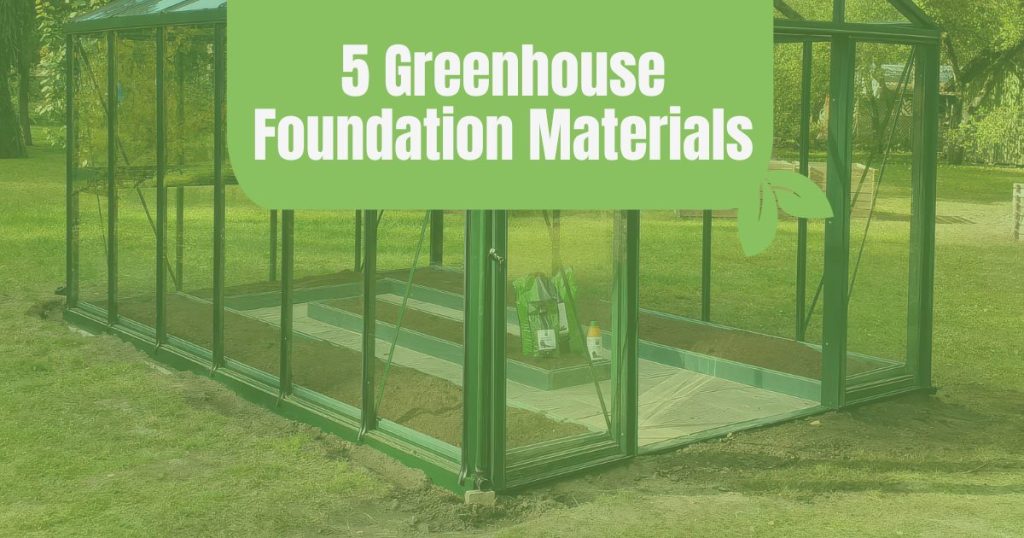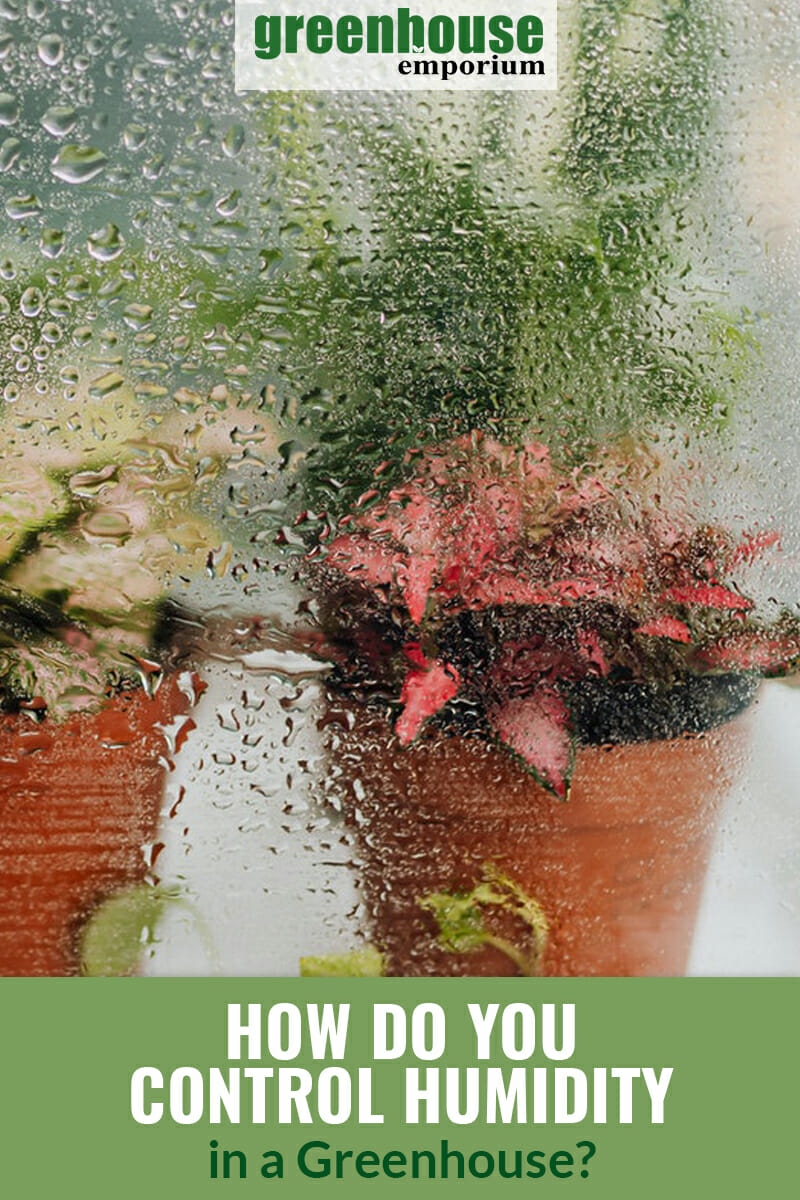
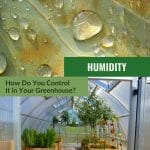
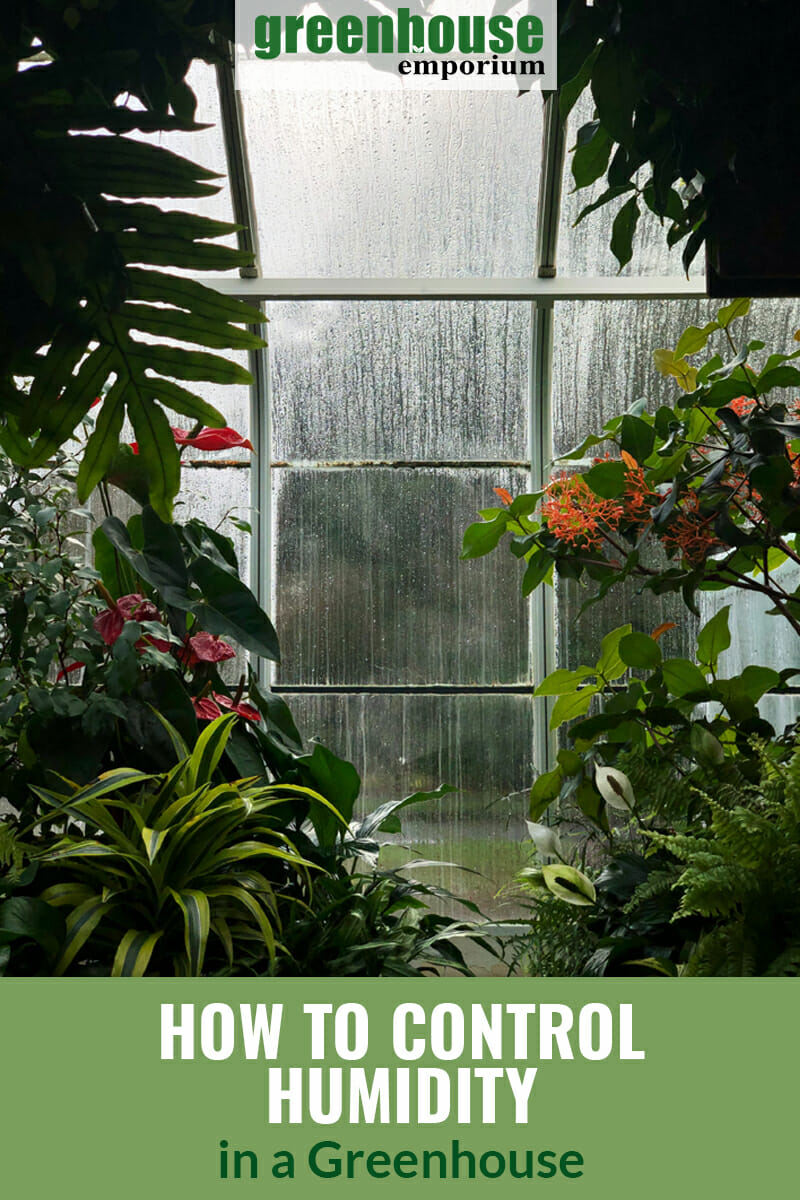
Greenhouses are perfect for growers who want to start their seeds early, protect their plants from harsh weather, or simply keep pests and disease at a minimum. However, growing your plants in a greenhouse takes more than just watering and fertilizing.
While you don’t have any control over the climate outside, you do have control in a greenhouse. It’s important to learn to control and maintain the ideal humidity for your plants so they can thrive. You can control or reduce the humidity in your greenhouse by making changes to your watering, ventilation, heating, and more.
Humidity in a greenhouse is important but it can be difficult to determine whether your greenhouse is too humid or not humid enough. In this article, you’ll discover the ideal humidity level for your plants and learn different methods of controlling or reducing the humidity in your greenhouse so you can maintain it.
Why is it important to control humidity in a greenhouse?
Humidity control is vital in preventing the spread of pests and diseases in a greenhouse. High levels of humidity promote the growth of powdery mildew, botrytis blight, and other fungal diseases, which you can learn more about here.
Too much humidity can significantly reduce plants’ yields in a greenhouse. This is because humidity affects the transpiration rate of your plants and the way they absorb nutrients.
On the other hand, not enough humidity can cause your plants to dry out and require a lot more water. This often results in plants with stunted growth, which likewise tend to grow slower and yield less.
How do I know if the humidity of my greenhouse is off?
Greenhouse gardeners often face the issue of too much moisture in their greenhouse, but don’t know it. Don’t let this be you!
One of the adverse indications that your greenhouse may be too humid is if your plants are browning. You will probably also be able to feel the moisture in the air if it feels muggy, hot, and heavy. If too much water remains in the plant trays over the course of the day, this might also be a sign of high humidity.
Some gardeners face the opposite issue, of having not enough humidity, especially if they live in particularly dry climates. This is usually indicated by roots drying out, leaves withering or even drying, or plants drooping as if they need water.
In addition, certain seasons come with higher humidity levels. For example, your area might be particularly humid in the summer or receive a lot of rainfall in the spring. When this is the case, controlling humidity becomes very important in a greenhouse.
Although you can often see signs of too much or not enough humidity, don’t entirely rely on your senses. Make sure to install a humidity gauge (humidistat) in your greenhouse.
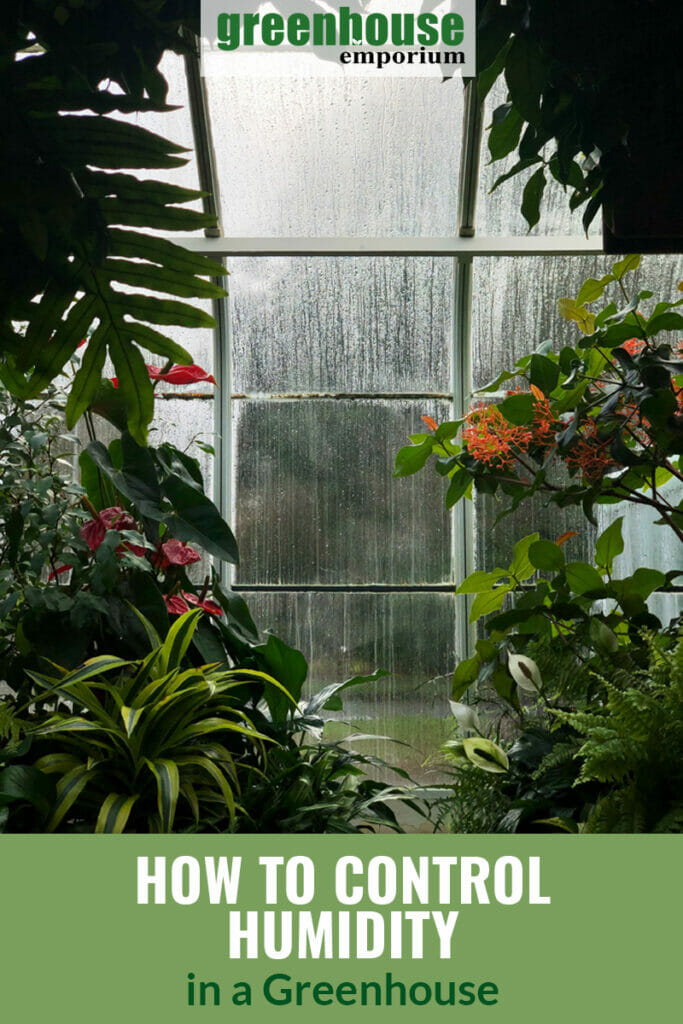
What is the ideal humidity level in a greenhouse?
While each plant is different, the ideal humidity level for most plants in a greenhouse is about 80% at 80°F (27°C). To learn more about greenhouse humidity and why it is important for your plants, check out this article.
At 80% humidity, most greenhouse plants have the best yields and highest growth rates. Plants have lower growth rates and yields when they are exposed to higher or lower humidity levels that prevent them from absorbing the right amounts of nutrients and water.
However, keep in mind that some tropical plants prefer higher humidity levels and some plants such as succulents and cacti do best with lower humidity levels.
Generally, plants with thicker leaves are tolerant of lower humidity levels because of their ability to hold water. Make sure to check out whether the plants you intend to grow have an unusual requirement for humidity.
Finally, keep in mind that temperature affects humidity. Higher temperatures mean more evaporation, thus lower humidity. The opposite is true for particularly low temperatures. This is why it is also important to maintain the temperature of your greenhouse, ideally between 64°F – 75°F (18-24°C).
5 methods to control humidity in a greenhouse (reducing greenhouse humidity)
Now that we’ve discovered the ideal humidity for greenhouses, it’s important to learn how to control it so your plants can thrive. Because of the enclosed environment and frequent watering, a greenhouse can quickly become too humid. As a result, greenhouse gardeners are usually faced with reducing humidity rather than increasing it.
Keep in mind that too much humidity can cause fungal infections or prevent your plants from growing. It’s important to the success of your greenhouse that you prevent humidity from causing issues!
If you need to increase humidity in your greenhouse, you can basically do the opposite of the methods below or install an evaporative cooler or humidifier.
Below, we’ll be exploring some of the best ways to reduce the humidity in your greenhouse.
1. Avoid excessive watering
The cheapest and easiest method to reduce humidity in your greenhouse is to water only when necessary. Stop watering your plants at night when the temperature drops, to prevent the moisture from hanging in the air.
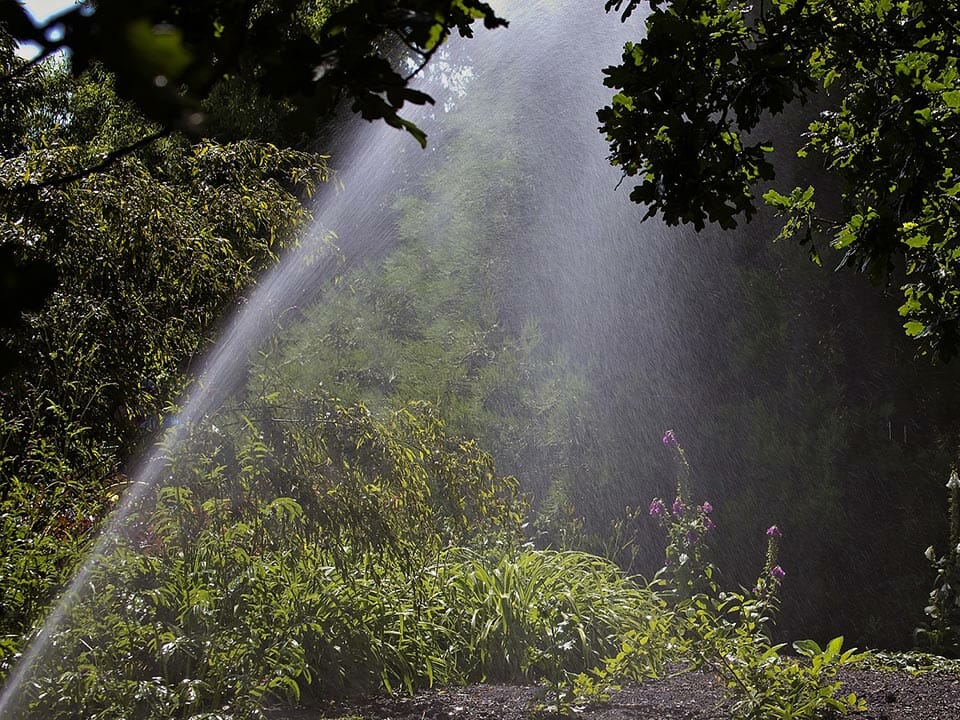
Excessive water on greenhouse floors, plants, and other surfaces also increases the humidity in your greenhouse as it evaporates.
Take these steps to keep your greenhouse dry:
- Avoid leaving excess moisture on plants. Instead of sprayers you can use a drip irrigation system to direct the water only where it is needed. Learn more about drip irrigation and soaker hoses here!
- Water your plants early in the day so they are dry before nighttime.
- Take out weeds regularly as they hold moisture in the leaf canopy.
- Maintain a well-drained greenhouse floor.
- Make sure there is no standing or pooling water in your greenhouse trays or saucers. This not only increases the humidity, but forms a breeding ground for fungal pathogens and certain pests.
These simple tricks can help you maintain the ideal humidity in your greenhouse. When you water your plants by spraying, excessive moisture can get trapped in the plant canopy, especially if there is poor ventilation. Plus, this method of watering is usually less efficient at getting water where the plants actually need it: their roots.
2. Ventilation
Good greenhouse ventilation not only improves air circulation but also helps control the humidity. Air circulation is key to preventing a fungal infection, which usually happens in damp spots. Ventilating your greenhouse helps excess water evaporate and thus keeps the humidity at an ideal level.
You can increase (or decrease) your greenhouse ventilation using fans, vents, and doors. Chances are that you already have most of this built into your greenhouse. Fans are easy to come by and install.
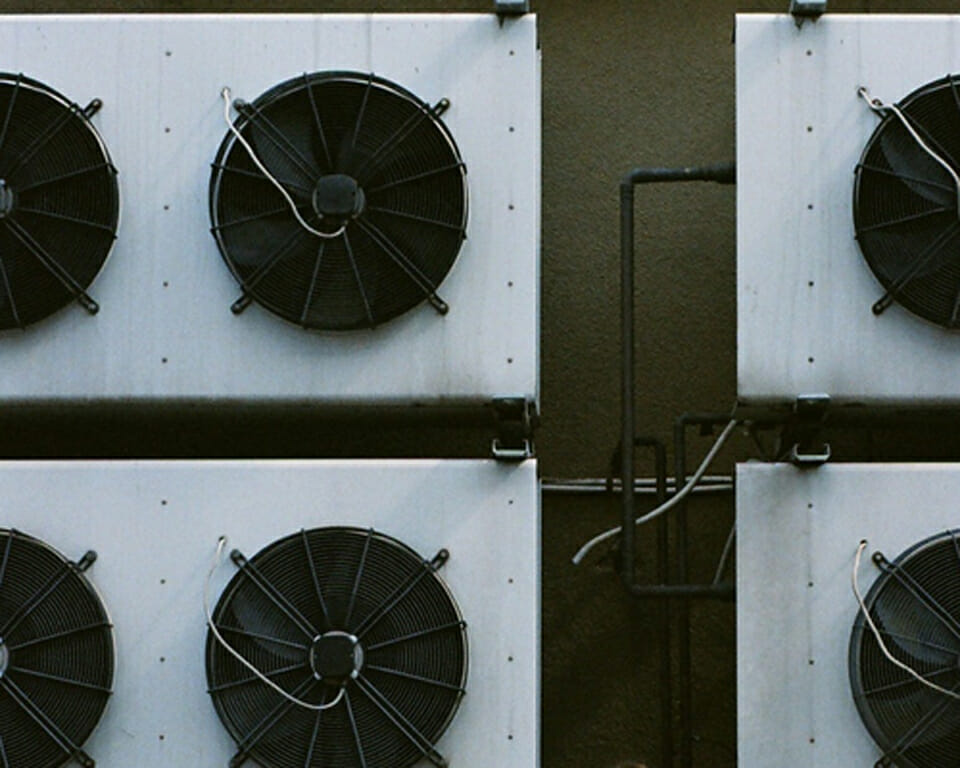
Steps you can take to ensure proper ventilation include:
- Adequately space your plants, benches, and grow tables to improve airflow around your plants.
- Turn on your greenhouse fan(s) and allow them to move air around your greenhouse (you can even put them on a timer).
- Open your vents to let in fresh air and allow moisture to escape.
Ventilation is an easy method to help control the humidity in your greenhouse. However, it can be an energy-intensive method that is not always effective in all climates. This is because outdoor air can have varying levels of humidity, being higher at night, during rainy seasons, or in tropical climates.
In addition, venting can affect greenhouse temperature adversely in cold seasons, and using fans can lead to a significant drop in temperature. Venting or using fans in the winter would require excessive heating to maintain ideal temperatures, which is neither practical nor economical. However, it is a great option when the weather is warm!
3. Heating
Depending on the size of your greenhouse, you may need to invest in a quality heater to keep your greenhouse warm during the colder months. Heating your greenhouse with an electric heater also helps control or reduce the humidity, because a higher temperature causes more evaporation.
Heating helps to increase the capacity of the air to hold moisture and reduce condensation. Make sure to reduce the temperature of your heater at night to avoid condensation. You can also use heating mats to keep the plant roots warm and prevent condensation on plants.
While a simple space heater might be enough for smaller greenhouses, larger greenhouses may require more complex equipment such as forced air systems.
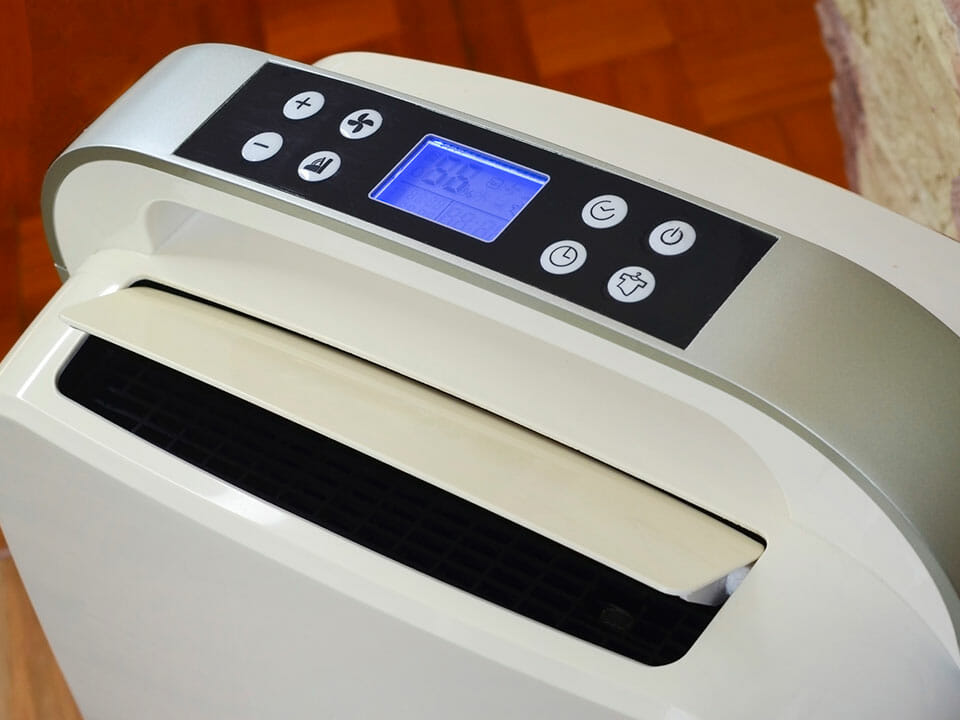
4. Use a dehumidifier
One of the most efficient methods of controlling humidity is a dehumidifier. If your greenhouse humidity is often too high, you’ll want to try out a quality dehumidifier specifically designed for greenhouses. Dehumidifiers reduce the moisture in the air while also enhancing the air ventilation.
Because dehumidifiers don’t draw air from outside the greenhouse, they are ventless closed systems that are more energy-efficient. Plus, they are a great option in the winter when you are trying to keep the warm air inside. Most dehumidifiers come with humidistats that help to monitor the humidity level of your greenhouse.
There are two different types of dehumidifiers: chemical and mechanical dehumidifiers. While mechanical dehumidifiers use refrigerator techniques or heat pump systems, chemical dehumidifiers simply use a hygroscopic solution saturated in salt that draws moisture from the air.
While dehumidifiers are efficient and effective, they can be more costly.
5. Desiccants
You can use desiccants in your greenhouse to trap excess moisture from the air. Desiccants utilize a chemical process to absorb water vapor and automatically pull moisture from the air without having to direct airflow.
Desiccants can be used as a quick and effective method to control humidity depending on the size of your greenhouse. If you own a larger greenhouse, you may need additional methods. Desiccants don’t require as much energy as is needed for heating a greenhouse, but they can be expensive.
How to increase the humidity in a greenhouse
Now, if your problem is a low humidity, there are actually quite a few easy and cost-effective methods you can use to increase the humidity in your greenhouse.
First off, you could simply mist or spray some water around the greenhouse. As the water evaporates, it’ll add moisture to the air. This can be especially effective at night when the greenhouse is heated up already.
Another method is to use a humidifier. These devices are designed to add water vapor to the air and can be very effective at boosting humidity levels. You can find a variety of humidifiers on the market, from small, portable units to larger ones designed for industrial spaces.
You could also consider placing trays or buckets of water around the greenhouse. As the water evaporates from these containers, it will increase the humidity in the air. This is a simple and inexpensive solution, though it may not be as effective in larger greenhouses. Standing water can also host pests and other insects.
Finally, consider your ventilation settings. If you’re constantly venting out the air from your greenhouse, you’re likely also losing a lot of moisture. Reducing ventilation a little can help maintain higher humidity levels. Just be cautious not to reduce ventilation too much, as proper airflow is vital for plant health, pollination, and to avoid overheating.
FAQs about greenhouse humidity
What is the ideal greenhouse temperature and humidity?
The ideal humidity level for most plants in a greenhouse is about 80% at 80°F (27°C).
How can I measure humidity levels in my greenhouse?
You can use a tool called a hygrometer. This device can provide a digital or analog readout of the relative humidity in the air. There are various types of hygrometers available, including simple, portable units, as well as advanced models that can interface with a computer or smartphone for remote monitoring.
How does humidity in a greenhouse affect pest and disease prevalence?
When there’s a lot of moisture in the air of your greenhouse, it can help harmful fungi, bacteria, and bugs like fungus gnats and spider mites to grow. On the other hand, if the air is too dry, it can make your plants weak and more likely to get sick or infested by pests. So, it’s really important to keep the moisture in your greenhouse just right to keep pests and diseases away.
Can changes in humidity harm the plants in my greenhouse?
Yes, changes in humidity can harm the plants in your greenhouse. Humidity and temperature changes can stress your plants. It’s crucial to maintain appropriate and stable humidity levels for optimal plant health.
Is condensation in a greenhouse bad?
Condensation in a greenhouse isn’t inherently bad, as it’s a natural process that can help maintain humidity levels. However, too much condensation can be problematic as it can lead to overly high humidity, promoting the growth of mold and mildew, and making conditions favorable for certain pests. Excessive condensation can also lead to water droplets falling onto the plants, which can cause damage and spread diseases. Therefore, managing condensation and ensuring proper ventilation is important in a greenhouse setting.

